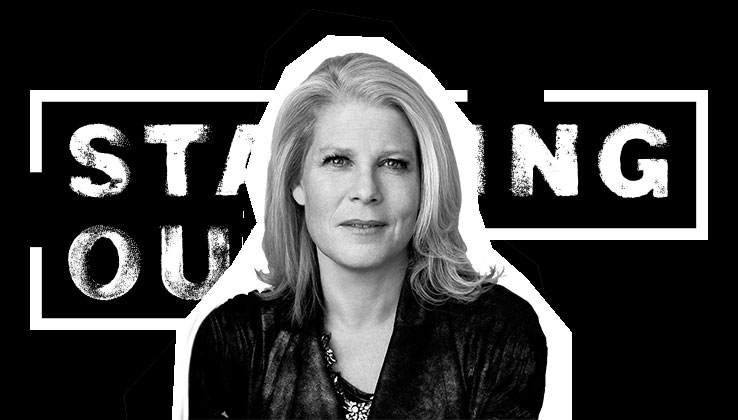‘In careers, you make bets’: GE’s Linda Boff on taking chances and hiring with her ‘spidey sense’

GE CMO Linda Boff has been in business for years. As a manager, she has developed what she calls a “spidey sense” about hiring. On this episode of Starting Out, Boff discusses how this sense has helped her decide which candidates to take chances on.
Subscribe: iTunes | Google Play | Stitcher | RSS | Anchor
I did not have a traditional marketing background or an MBA. [Former GE vice chair] Beth [Comstock] believed in me. In careers, you make bets. Sometimes, they work out. I’m glad some people took them on me. I believe in spidey sense. You know almost instantly. If you have a bad feeling at an interview, it’s a warning sign. Think about it in a relationship sense — that feeling that you get in relationships that says, “I like you; I want to spend time with you.”
Diverse teams are better teams. The temptation that can exist to hire people like you is a temptation we need to resist. The difference between wanting to spend time with someone and being like them is a huge difference. Even in our agency partners, I love having a roundtable with competitors who will have a debate.
My dad always says it doesn’t matter what you do, as long as you love it. I always look for it for myself in people — the spirit of wanting to do the best work of our lives.
My passion was to be an RJ, taking photos for the school newspaper, being active in my sorority. I wanted to be in media. I was always interested in working over studying. Maybe it’s why I never got an MBA. I’ve always learned by doing. Opportunities have allowed me to have a homegrown MBA. I left college one semester early. I went to New York City in a glorified internship with ABC radio network. I think I did more internships than anybody. I did about seven to eight internships before college before I graduated.
I was interested in finding a job in comms and PR. I set out to do that. I went to a small PR agency: Michael Klepper agency. You did everything. You faxed things; you went to client meetings and trade shows. I went with a client to CES. I was turning 21. I was too embarrassed to turn 21 and didn’t tell my client. I think about my 21-year-old self, and I was embarrassed by how young I was. I thought it was something I had to hide.
Today, I meet so many young people like [GE’s head of marketing innovation] Katrina [Craigwell], and their self-assurance and confidence is wonderful to watch. What does it mean to be 21 or 31 today and have a different set of choices? Not easy. Work-life balance is still a challenge. The openness is different. There are more women. The tribes are richer. That’s a beautiful thing for me to say. I had a male tribe, so you shared different things.
I work the hardest on constructive conflict. Being tough is not as bad. I say, “This is going to be a tough discussion.” I find that by actually saying it, it allows me to lean into my innate generosity, do it in a way that it uncurls my stomach. People forget that confrontation is hard. As I work on it, I continue to say tough conversation is the right thing for me. People want to know where they stand. A coach once said to me, “You’re going to have tough conversations — it’s just a matter of when.” I would say that what people often get wrong about me is that being kind doesn’t mean that I’m incapable of delivering a real no.
More in Marketing

Why the New York Times is forging connections with gamers as it diversifies its audience
The New York Times is not becoming a gaming company. But as it continues to diversify its editorial offerings for the digital era, the Times has embraced puzzle gamers as one of its core captive audiences, and it is taking ample advantage of its advantageous positioning in the space in 2024.

Why B2B marketers are advertising more like consumer brands to break through a crowded marketplace
Today’s marketing landscape is more fragmented than ever. Like consumer brands, business brands are looking to stand out in a crowded and competitive marketplace, making marketing tactics like streaming ads, influencers and humorous spots more appealing.

As draft puts WNBA in spotlight, the NBA is speeding up ballplayers’ transition to creators
The NBA’s star athletes are its greatest marketing asset.





